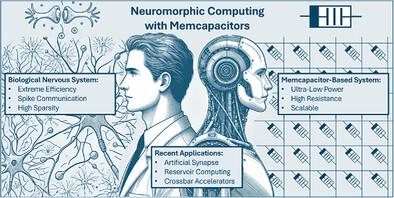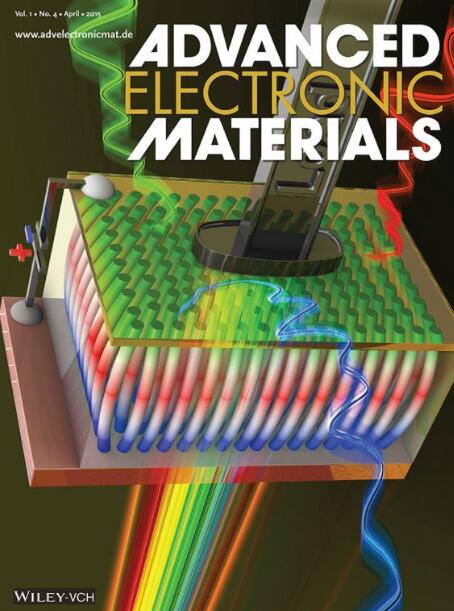Neuromorphic Computing with Memcapacitors: Advancements, Challenges, and Future Directions
IF 5.3
2区 材料科学
Q2 MATERIALS SCIENCE, MULTIDISCIPLINARY
引用次数: 0
Abstract
Modern applications demand immense data processing and computational power, yet conventional architectures, constrained by the Von Neumann bottleneck and data presentation, struggle to meet these requirements. This has driven the rise of neuromorphic computing, which mimics the biological nervous system through spike-encoded data and threshold-based computations for high energy efficiency. However, traditional hardware (CMOS transistors) designed for continuous computations fails to harness this potential fully, necessitating specialized neuromorphic hardware alternatives. Memristors have emerged as key components for neuromorphic hardware but suffer from high static power consumption, sneak-path currents, and reliance on selector devices. In contrast, memcapacitors provide a more efficient alternative, leveraging high resistance and charge-domain computations to overcome these limitations. This review presents a comprehensive analysis of memcapacitors for neuromorphic applications, covering capacitive switching mechanisms and materials, key hardware considerations, and recent advancements. It explores their role in artificial synapses, physical reservoir computing, and crossbar-based accelerators, highlighting their potential for scalable and low-power neuromorphic systems. Finally, key challenges and future research directions are discussed, particularly in materials engineering, device fabrication, and large-scale system integration, positioning memcapacitors as promising candidates for next-generation neuromorphic computing.

记忆电容器的神经形态计算:进展、挑战和未来方向
现代应用程序需要巨大的数据处理和计算能力,然而传统架构受到冯·诺依曼瓶颈和数据表示的限制,难以满足这些要求。这推动了神经形态计算的兴起,它通过峰值编码数据和基于阈值的计算来模拟生物神经系统,以实现高能效。然而,为连续计算而设计的传统硬件(CMOS晶体管)无法充分利用这种潜力,因此需要专门的神经形态硬件替代品。记忆电阻器已成为神经形态硬件的关键部件,但存在高静态功耗、潜行路径电流和依赖选择器器件的问题。相比之下,memcapacitors提供了一个更有效的替代方案,利用高电阻和电荷域计算来克服这些限制。本文综述了神经形态记忆电容器的应用,包括电容开关机制和材料,关键硬件考虑和最新进展。它探讨了它们在人工突触、物理储层计算和基于交叉棒的加速器中的作用,突出了它们在可扩展和低功耗神经形态系统中的潜力。最后,讨论了关键挑战和未来的研究方向,特别是在材料工程,器件制造和大规模系统集成方面,将memcapacitors定位为下一代神经形态计算的有希望的候选者。
本文章由计算机程序翻译,如有差异,请以英文原文为准。
求助全文
约1分钟内获得全文
求助全文
来源期刊

Advanced Electronic Materials
NANOSCIENCE & NANOTECHNOLOGYMATERIALS SCIE-MATERIALS SCIENCE, MULTIDISCIPLINARY
CiteScore
11.00
自引率
3.20%
发文量
433
期刊介绍:
Advanced Electronic Materials is an interdisciplinary forum for peer-reviewed, high-quality, high-impact research in the fields of materials science, physics, and engineering of electronic and magnetic materials. It includes research on physics and physical properties of electronic and magnetic materials, spintronics, electronics, device physics and engineering, micro- and nano-electromechanical systems, and organic electronics, in addition to fundamental research.
 求助内容:
求助内容: 应助结果提醒方式:
应助结果提醒方式:


